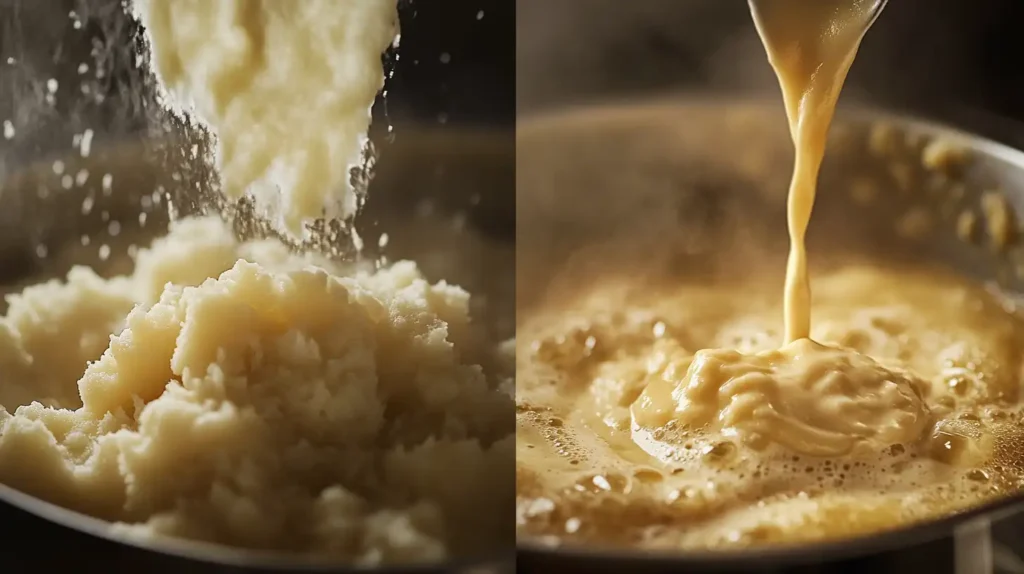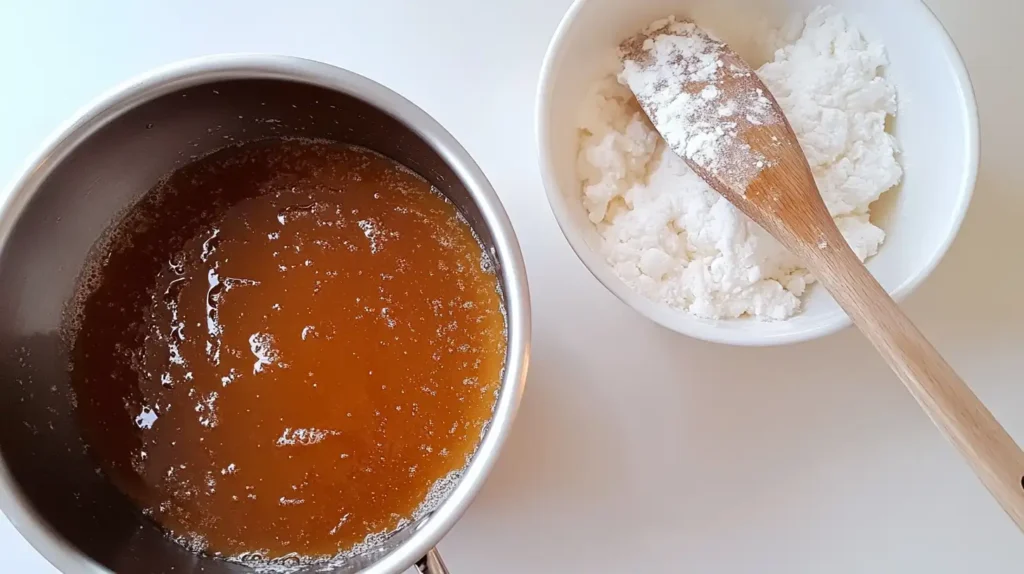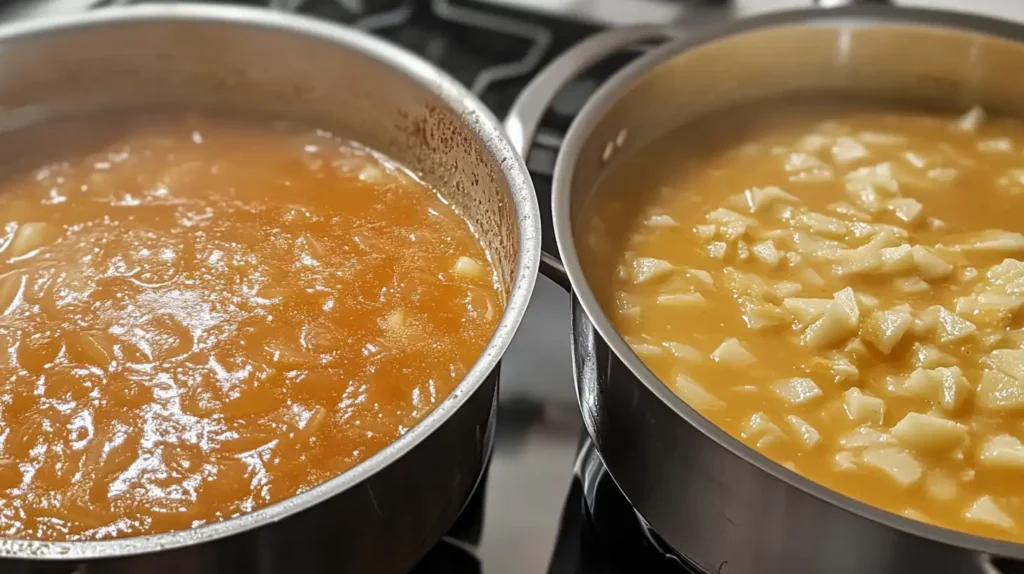Introduction:
There’s nothing quite as comforting as a bowl of creamy potato soup. Whether it’s a chilly winter evening or just a craving for something warm and hearty, potato soup is a go-to dish. But achieving that rich, velvety consistency? That’s where things can get tricky. When considering what is a good thickener for potato soup, it’s essential to explore various options available. Understanding what is a good thickener for potato soup is vital for achieving the desired consistency and flavor.
So, what is a good thickener for potato soup? Common choices include flour, cornstarch, and high-starch potatoes.Ultimately, discovering what is a good thickener for potato soup can transform your cooking experience.
When you think about what is a good thickener for potato soup, remember that personal preference plays a significant role.
From experience, those who ask what is a good thickener for potato soup may have varying tastes and requirements.
A flavorful potato soup starts with understanding what is a good thickener for potato soup to achieve that creamy base.
For thickening, what is a good thickener for potato soup is key when deciding between broth or cream.
In many cases, what is a good thickener for potato soup can simply be the potatoes themselves! Ultimately, knowing what is a good thickener for potato soup can elevate any recipe you try. Maybe your soup turns out too thin, leaving you with a broth-like texture instead of a thick, creamy base. Or perhaps it becomes too heavy, almost like mashed potatoes. Striking the right balance requires the right thickener and the right technique.
The good news is, you don’t need fancy ingredients to thicken your soup. Some of the best thickeners are probably already in your kitchen. From natural methods like mashing potatoes to using roux or cream, there’s a perfect thickener for every preference. Understanding what is a good thickener for potato soup can elevate your cooking game, providing that desired creamy texture. Incorporating what is a good thickener for potato soup into your cooking arsenal can be very beneficial.
Choosing the Right Base for a Creamy Potato Soup
From personal experience, knowing what is a good thickener for potato soup helps maintain a creamy texture.
When experimenting with flavors, always ask yourself: what is a good thickener for potato soup that complements them?
Ultimately, establishing what is a good thickener for potato soup can enhance the dish’s overall quality.
A great potato soup starts with the right base. Some people prefer a lighter, broth-based soup, while others love a rich, dairy-heavy version. The choice of liquid and potatoes plays a major role in determining how thick your soup can get before even adding a thickener.
For the best potato soup, the foundation matters. Whether you choose broth or cream, knowing how different liquids affect texture is key. Learn more about selecting the right ingredients for a balanced dish by reading our Hamburger Potato Soup Recipe.
Broth vs. Cream: Which is Better?
Some soups rely on a broth base, while others go all in with dairy. If you want a thicker soup, using cream or half-and-half is the best route. Broth-based soups tend to be lighter, but they can still be thickened using starches or pureed vegetables.
| Base Type | Thickness Level | Best for |
|---|---|---|
| Chicken or Vegetable Broth | Light to medium | Healthier, low-fat soups |
| Heavy Cream | Very thick and rich | Indulgent, restaurant-style soups |
| Half-and-Half | Medium thickness | Balanced, creamy soups |
Starchy Potatoes: The Foundation of a Thick Soup
Not all potatoes are created equal. Some break down easily, naturally thickening the soup, while others hold their shape. If thickness is the goal, russet potatoes are the best choice. They have a high starch content that dissolves into the broth, creating a naturally creamy texture.
Waxy potatoes, like red potatoes or Yukon Golds, hold their shape better but don’t thicken the soup as much. If using them, you’ll need additional thickeners.
“The secret to naturally thick potato soup is choosing high-starch potatoes like russets. They break down beautifully, eliminating the need for extra flour or cornstarch.”
Why Cooking Time Affects Thickness
Focusing on what is a good thickener for potato soup ensures your dish remains balanced and delicious.
Deciding what is a good thickener for potato soup can depend on dietary preferences and ingredient availability.
Simmering soup for an extended period allows starches to release, which thickens the broth naturally. But there’s a fine line. Overcooking potatoes can lead to a grainy texture, while undercooking leaves the soup too thin. Cooking the potatoes until just fork-tender ensures the best consistency.
Best Natural Thickeners for Potato Soup
In summary, what is a good thickener for potato soup varies widely, so experiment to find your favorite!
Sometimes, you don’t need extra ingredients to thicken potato soup. Using what’s already in the pot can be the easiest solution.

Mashing vs. Blending: How to Use Potatoes as a Thickener
Mashing a portion of the cooked potatoes right in the pot is a foolproof way to thicken the soup without changing the flavor. Using a potato masher gives a chunky texture, while an immersion blender creates a smoother consistency.
If blending, be careful not to overdo it. Over-blended potatoes release too much starch, making the soup gummy rather than creamy.
Using Heavy Cream, Milk, or Half-and-Half
Dairy is a classic way to achieve a richer, thicker soup. Heavy cream gives the thickest consistency, while milk provides a lighter alternative.
For those who prefer a non-dairy option, coconut milk can work well, adding a subtle sweetness without overpowering the dish.
Cheese and Dairy-Based Thickeners
Melting cheese into the soup thickens it while adding flavor. Cheddar, Parmesan, or cream cheese all work well. To prevent clumping, shred cheese finely and stir it in gradually.
“A handful of shredded cheese can take your potato soup from ordinary to restaurant-worthy, adding both thickness and depth of flavor.”
Flour and Starch-Based Thickeners
When natural thickening methods aren’t enough, flour and starches offer an easy fix. These ingredients work by absorbing liquid and creating a smooth, creamy consistency without altering the flavor of the soup.

What is the Best Flour for Thickening Potato Soup?
Flour is one of the most common soup thickeners, but not all types work the same way. Some are better at creating a velvety texture, while others provide a more rustic thickness.
| Flour Type | Thickness Level | Best Used For |
|---|---|---|
| All-Purpose Flour | Medium thickness | Traditional soups |
| Cornstarch | Very thick | Gluten-free option |
| Potato Starch | Light and smooth | Enhancing potato flavor |
Cornstarch is a powerful thickener, but it must be mixed with cold water before adding to soup. Dumping it straight in can cause clumps. Potato starch works similarly but complements the flavor of the soup more naturally.
Using a roux or slurry can be a game-changer when thickening soups, but choosing the right method makes all the difference. If you’re curious about thickening techniques beyond potato soup, check out our guide on How to Make Chunk Pineapple Crushed – A Step-by-Step Guide.
How to Make a Proper Roux for Soup
A roux is a classic French thickener made from equal parts flour and fat, usually butter. Cooking the flour removes its raw taste and creates a smooth texture when mixed into soups.
How to make a simple roux:
- Melt two tablespoons of butter in a saucepan over medium heat.
- Stir in two tablespoons of flour and cook for about one minute, stirring constantly.
- Gradually whisk in a small amount of soup broth to create a smooth paste.
- Slowly add the roux mixture back into the main pot, stirring well.
To bring new life to potato soup, identifying what is a good thickener for potato soup becomes critical.
The key is to cook the roux just long enough to remove the floury taste but not so much that it darkens. This method not only thickens the soup but also adds a rich, buttery flavor.
Slurry vs. Roux: Which One Works Better?
While a roux is made before adding liquid, a slurry is added at the end of cooking. A slurry consists of starch (like cornstarch or flour) mixed with cold water or broth.
| Thickening Method | When to Use | Key Benefit |
|---|---|---|
| Roux | Start of cooking | Adds richness and depth |
| Slurry | End of cooking | Quick fix without changing flavor |
A slurry is great when you need a last-minute thickening boost, but a roux creates a more even, flavorful texture.
Using a roux or slurry can be a game-changer when thickening soups, but choosing the right method makes all the difference. If you’re curious about thickening techniques beyond potato soup, check out our guide on How to Make Chunk Pineapple Crushed – A Step-by-Step Guide.
Vegetable and Protein-Based Thickeners
For a healthier, high-protein alternative, vegetables and eggs can help achieve the right consistency.
Adding Mashed Beans or Lentils for Thickness
Blending a small portion of cooked white beans or lentils into the soup adds body without changing the flavor. This technique works well for those looking to avoid dairy or flour-based thickeners.
Since beans are high in fiber, they make the soup more filling while keeping it creamy. If using lentils, red lentils are best because they break down easily and don’t alter the color of the soup.
Egg Yolks: A Classic Trick for a Velvety Texture
Egg yolks are a lesser-known but highly effective way to thicken soups. They create a silky consistency without making the soup overly heavy.
How to use egg yolks in soup:
- Beat one or two egg yolks in a small bowl.
- Slowly whisk in a few spoonfuls of warm soup to temper the eggs.
- Stir the mixture back into the soup, cooking on low heat.
This method works best when the soup is not boiling, as high heat can cause the eggs to scramble instead of blend smoothly.
“If you’re aiming for a creamy, luxurious texture without relying on dairy, egg yolks are a game-changer.”
Common Mistakes That Ruin Potato Soup Texture
Even with the right thickener, mistakes can ruin the final texture of potato soup. Some of the most common issues include bland flavor, over-thickening, or an unpleasantly gummy texture.

Why Does My Potato Soup Taste Bland?
Ultimately, knowing what is a good thickener for potato soup can be the difference between a mediocre dish and a delightful one.
A soup can be perfectly thick but still lack flavor. The best way to enhance the taste is by layering seasonings correctly.
- Use a good broth: A high-quality chicken or vegetable broth makes a difference.
- Season at multiple stages: Add salt and spices early and adjust before serving.
- Incorporate umami boosters: A splash of Worcestershire sauce, Parmesan rind, or smoked paprika can add depth.
Over-Thickening: How to Fix a Too-Thick Soup
If the soup becomes too thick, it can feel heavy and starchy rather than smooth. The best fix is to gradually add more liquid.
| Issue | Solution |
|---|---|
| Too thick | Add warm broth or milk in small amounts |
| Gummy texture | Avoid over-blending and use a whisk to break up starches |
Avoiding Gummy Texture: Why Over-Blending is a Problem
Using a blender too aggressively can cause the starch in potatoes to break down too much, leading to a gluey consistency. The best way to blend is by pulsing instead of blending continuously. If a smoother texture is needed, using a food mill or hand masher is a safer choice.
FAQ Section
What is a good thickener for potato soup?
There are many ways to thicken potato soup depending on your preference. Natural options include mashing some of the potatoes or using dairy like heavy cream or cheese. Flour and starch-based thickeners, such as a roux or cornstarch slurry, provide a smooth, even texture. For a healthier option, blended beans or egg yolks can add thickness without changing the flavor too much.
Do you drain hamburger meat for soup?
Draining hamburger meat for soup depends on the fat content and desired flavor. If using lean ground beef, there may not be much fat to drain. For higher-fat ground beef, draining excess grease prevents the soup from becoming too oily. However, some prefer to keep a little fat for added flavor. A good approach is to cook the beef first, drain if needed, then add it back to the soup.
What’s the difference between hamburger stew and hamburger soup?
Hamburger stew is usually thicker with less liquid, while hamburger soup has a brothier consistency. Stew often contains larger chunks of vegetables and meat, while soup has a thinner base that’s meant to be sipped or spooned. The ingredients can be similar, but the liquid-to-solid ratio is what sets them apart.
Why does my potato soup taste bland?
Potato soup can taste bland if it lacks seasoning or depth of flavor. The key to a rich and balanced taste is to season in layers, starting with salt and pepper, then adding ingredients like garlic, onions, and spices. Using a well-flavored broth instead of plain water also makes a big difference. Adding a touch of acidity, like a splash of vinegar or a squeeze of lemon, can brighten the flavors.
When considering what is a good thickener for potato soup, it is crucial to layer flavors correctly to enhance the overall experience.
Conclusion
Making a thick and creamy potato soup doesn’t have to be complicated. The best approach depends on what you have in your kitchen and the texture you prefer. Mashing some of the potatoes, using a roux, or adding dairy are all simple ways to achieve a thicker consistency. For those avoiding flour, cornstarch or blended beans offer great alternatives.
Getting the seasoning right is just as important as the thickness. A good broth, layered spices, and umami-rich ingredients can take a basic potato soup from ordinary to full of flavor. Whether you like a chunky, rustic soup or a smooth, velvety version, knowing how to control thickness makes all the difference.

